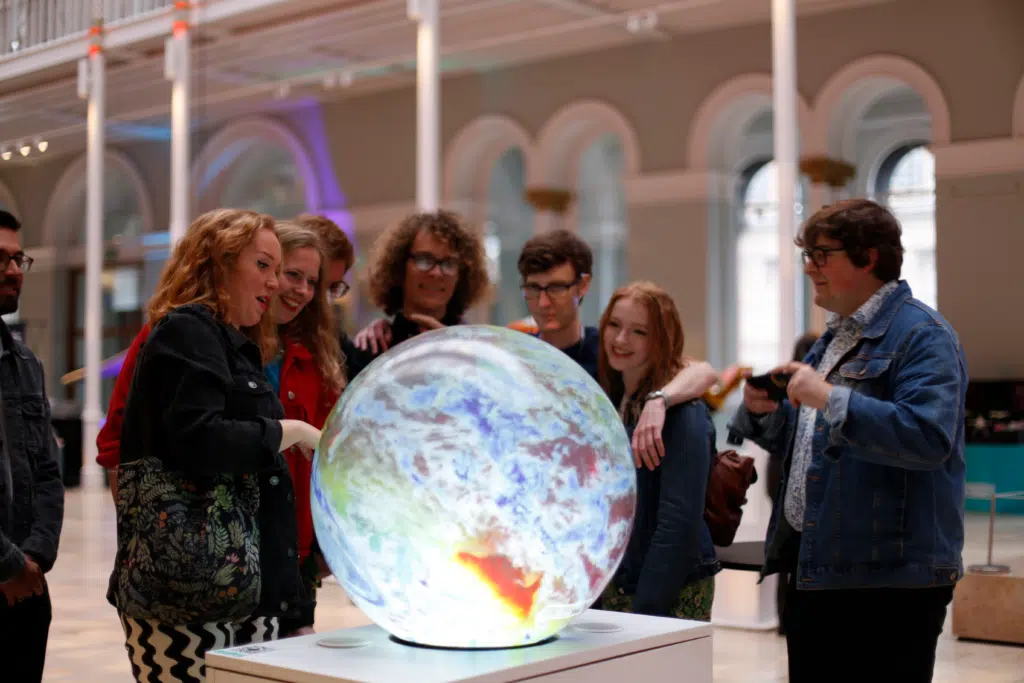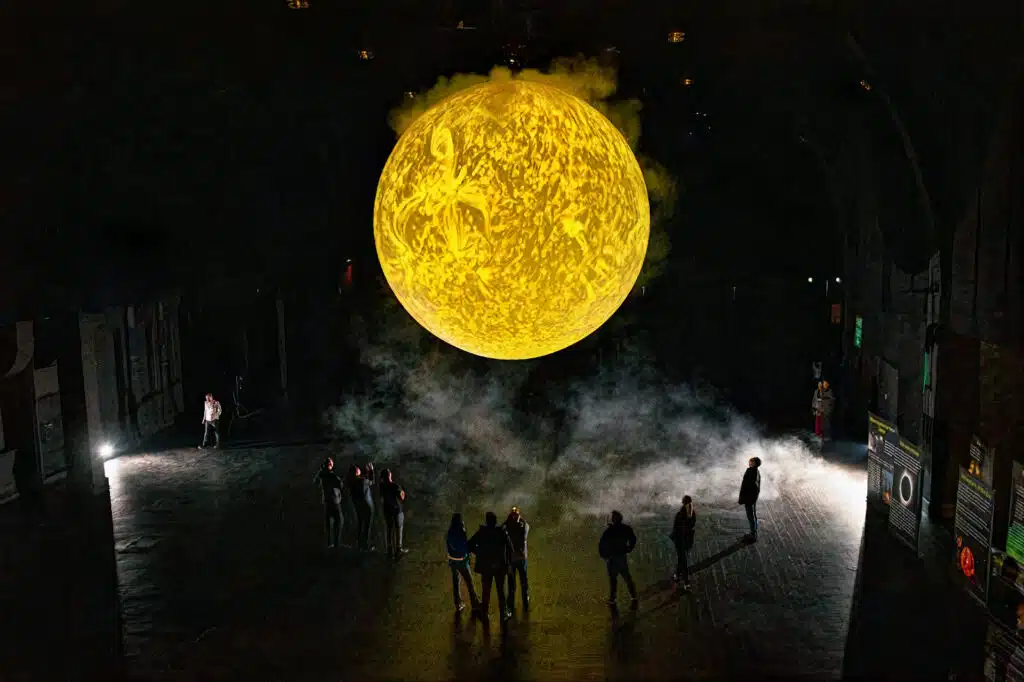Blog: Shared DNA

Our spherical displays and the MSG Sphere in Las Vegas share some mathematical DNA – but why do we find spherical displays so captivating?

If you’ve spent time on social media at some point since 4 July, you’ll undoubtedly have stumbled across some scenes from Las Vegas that appear to be clips from a science fiction film. A glowing moon catching the attention of passers-by, greeting us with an emphatic ‘hello world’, or blinking intensely over the nearby golf course – the MSG Sphere has captured the imagination of people around the globe.
The fervour is only likely to reach a peak this month, as U2 are billed to christen the Sphere’s sophisticated, state-of-the-art sound and visual systems with the opening of U2 UV: Achtung Baby at the MSG Sphere on 29 September. Love them or hate them, it’s hard to deny that Bono and co deliver an exhilarating blend of showmanship and epic stadium rock ideal to max out the capabilities of their new ‘playpen’.
This is the largest LED screen in the world, which is an achievement in itself. However, we’ve seen screens getting progressively larger and larger over the years, and rarely have they gripped the public imagination in the same way that this remarkable spherical display has.
So what is it about spheres that means we can’t look away?

At a fundamental level, it’s commonly thought that there’s something uniquely attractive about a sphere to human beings, baked into the fact that we associate spheres with the faces of our family and our peers. Essential to how we communicate, and develop our bonds with others, the shape of the sphere is a source of rich and vital information to which we should pay attention.
The shape of the sphere also makes it an ideal medium with which to represent certain datasets. In many cases, it’s the only way to accurately represent certain data.
If you’re reading this article, we presume that – like us – you have more than a passing interest in immersive audio-visual experiences. So you’ll appreciate that we are utterly sincere when we say: Spherical displays do more than just display content, they transport us to other worlds, or bring fantastical elements of other worlds into our own.
While virtual reality and augmented reality have their merits, audiences don’t necessarily want to be made to wear a headset, and the rituals of VR and AR can often break the illusion that is so vital to the immersive experience.
Spherical displays are the truly immersive medium for a three dimensional world. Research into human interactions with different displays has shown differences in how users conceptualise interacting with spherical and flat screen displays (Soni et al, 2021).
If you’re looking to accurately represent an object in three dimensions, then you need a spherical screen.
For the modern consumer, especially the tech-savvy cohorts, this level of representation and human-engagement is not just desired, it’s expected. With the level of competition in technology so incredibly high, consumers are seeking experiences that resonate, draw them in and deliver them an unforgettable sensory experience.
A spherical display can do just that: providing a 360 degree viewing experience that immerses the audience into the world the sphere inhabits.
Bring interactivity into the mix – which is where Pufferfish’s spherical displays have the edge on the MSG Sphere, since the PufferTouch is the world’s leading touch enabled spherical display – and you have a very potent concoction.
Suddenly audiences can not only see and hear this new world, but they can touch it, and change it too. This bridges the gap to full immersion, and satisfies a very relatable desire to have an impact on the world around us.
Of course, we can’t be complacent, and we see there’s wonderful things happening in the wider world of enormous display screens at the moment. London’s Outernet Global, which boasts the world’s largest deployment of LED screens by pixel density, continues to delight viewers with staggering new content partnerships; recent highlights include collaborations with NASA and the McGloughlin Brothers. This Summer, Post Malone surprised visitors to Times Square with a live concert in front of TSX Entertainment’s 8,000 square-foot-billboard, currently the largest signage opportunity in Times Square.
Without a doubt, the most innovative and immersive experiences will take full advantage of the technology solutions available, and ultimately, it is creativity that is the driving force behind a truly transformative event.
Each month we see more and more creativity in the industry, and we look forward to updating you in future on the very latest in the immersive audio-visual space.
Until next time!